#Justice for Angela Weber
Explore tagged Tumblr posts
Text
Do you guys ever think about the fact that Angela Weber's boyfriend, Ben Cheney, was cut out of the movie despite the fact that they were the perfect match and Edward and Emmett tag teamed getting them together because they were so worried they'd be rejected but after that they were the perfect couple, who loved each other unconditionally, and were the only people who were nice to Bella in New Moon without asking for anything in return but Ben wasn't in the movie so she got a Eric, who was constantly pining after Bella the whole time and she deserves better?
Because I do. So much.
#Justice for Angela Weber#She deserves so much better#twilight#twilight saga#twilight renaissance#angela weber#Ben cheney
11 notes
·
View notes
Note
👹 - TWILIGHT 🤭🤭🤭🤭
omg lol I hope I do you justice
👹 - Movie Casting!
Twilight
Bella Swan: Asmo
Edward Cullen: Mc
Jacob Black: Diavolo
Charlie Swan: Lucifer
Billy Black: Barbatos
Carlisle Cullen: Raphael
Alice Cullen: Thirteen
Emmett Cullen: Satan
Rosalie: Mephistopheles
Esme Cullen & Jessica Stanley: Simeon
Jasper Hale: Beelzebub
Mike Newton: Mammon
Tyler Crowley: Leviathan
Eric Yorkie: Solomon
Jessica Stanley: Simeon
Angela Weber: Luke
Background/Lesser Characters: Little D's
Ask Box Trick or Treating (click the link for rules and to see what characters are available for headcanons)
#obey me!#obey me#shall we date: obey me#obey me: shall we date#obey me: one master to rule them all#obey me nightbringer#ask box trick or treating#ask game#om!
15 notes
·
View notes
Photo

witch!angela x vampire!bella moodboard (request by anon)
#okay idk anything about witches so hopefully i did this justice fghsdjgkf#but that middle top one....is my absolute favorite picture ever#the twilight saga#twilight#bella swan#angela weber#bella x angela#mine#my edit#request
218 notes
·
View notes
Photo










Leap of Faith
All-American XV
Bruce Weber
teNeues, Düsseldorf 2015, 200 pages, 24 x 30.5 cm, softcover, ISBN 978-3-8327-3299-8
euro 50,00
email if you want to buy :[email protected]
The centerpiece of All-American Volume XV: Leap of Faith, this volume of Bruce Weber's annual arts journal, is a long-form photo essay Weber shot this spring in Richmond, Virginia. Taking inspiration from the work of Angela Patton, an activist who organizes a father-daughter weekend each year, Weber presents a story of family, community and the impact of the justice system on everyday life in the city. An immigrant’s search for home finds unique expression in the photo memoir of Misa Rusek, a fearless octogenarian whose family’s journey begins in turn-of-the-century Japan and continues today in Israel, with reminiscences of internment camps and postwar California in between. A second story by Bruce Weber considers the sporting life in a profile of Gordy Gronkowski, who trained his five sons to become professional football and baseball players. A tribute to the lyrical American painter Jane Wilson stands in contrast to the rugged stoicism of Ben Johnson, a rancher-turned-actor favored by Sam Peckinpah and John Ford. The striking photographs of Thérèse Bonney—who documented the civilian toll of World War II—is echoed in and complicated by the contemporary work of the lauded photojournalist Lynsey Addario. Television host and political correspondent John Dickerson offers a personal reflection on the life and career of his mother, Nancy Dickerson, the pioneering CBS newswoman. And lighthearted risk takers are celebrated as well: Bruce Meyers, inventor of the Meyers-Manx dune buggy, and Jama Hedgecoth, the founder of the Noah’s Ark Animal Sanctuary in rural Georgia.

06/11/22
orders to: [email protected]
ordini a: [email protected]
twitter: @fashionbooksmi
instagram: fashionbooksmilano, designbooksmilano tumblr: fashionbooksmilano, designbooksmilano
13 notes
·
View notes
Text
twilight major arcana
the fool: bella swan (human)
the magician: benjamin
the high priestess: alice cullen
the empress: esme cullen
the emperor: carlisle cullen
the hierophant: aro
the lovers: kate & garrett (or your favorite ship here)
the chariot: jacob black
strength: emmett cullen
the hermit: alistair
wheel of fortune: siobhan
justice: rosalie hale
the hanged man: edward cullen
death: victoria
temperance: angela weber
the devil: james
the tower: jasper hale
the star: nahuel
the moon: jane & alec
the sun: seth clearwater
judgement: bree tanner
the world: bella cullen (vampire)
11 notes
·
View notes
Note
who could you see for angela weber and jessica stanley?
angela: becky g, seychelle gabriel, daniella pineda, georgie flores, victoria moroles, ariela barer (non-binary), ally brooke, karla souza, lindsey morgan, nizhoni cooley, justine biticon, inde navarrette.
jessica: lulu antariksa, saoirse ronan, becky g, kiernan shipka, alisha boe, zoey deutch, olivia liang, jenny boyd, sabrina carpenter, chiara aurelia, courtney bandeko, chloe bailey, savannah lee smith, anna lambe, benedetta gargari, madison iseman, skyler samuels, stephanie styles, suki waterhouse, victoria justice, nicole munoz, lucy boynton, mishti rahman, elizabeth lail, alia bhatt, aisha dee, demet ozdemir, camila queiroz, ayca aysin turan, bree kish, lana condor, courtney eaton, samantha logan, hafsanur sancaktutan, inde navarrette, maddison jaizani, moon ga young, simay barlas, normani kordei, tati gabrielle, and davika hoorne.

2 notes
·
View notes
Photo

----[]
http://www.bing.com/images/search?q=science+fiction+klassiker+bücher
http://www.bing.com/images/search?q=science+fiction
http://www.bing.com/images/search?q=flug+scheibe
http://www.bing.com/images/search?q=raum+schiff
--
https://www.tor-online.de/feature/buch/2019/03/die-100-besten-science-fiction-buecher-aller-zeiten
Die 100 besten Science-Fiction-Bücher (a..z)
Als es noch Menschen gab - Clifford Simak (City, 1952)
Andymon - Angela und Karlheinz Steinmüller (1982)
Auf zwei Planeten - Kurd Laßwitz (1897)
Auslöschung - Jeff VanderMeer (Annihilation, 2014)
Bedenke Phlebas - Iain M. Banks (Consider Phlebas, 1987)
Binti - Nnedi Okorafor (2015)
Blade Runner (Träumen Androide von elektrischen Schafen) - Philip K. Dick (Do Androids Dream Of Electric Sheep, 1968)
Blumen für Algernon - Daniel Keyes (Flowers for Algernon, 1966)
Der brennende Mann (Die Rache des Kosmonauten, Tiger! Tiger!) - Alfred Bester (The Stars My Destination, 1956)
Commander Perkins - H. G. Francis (1979, Hörspiele 1976)
Contact - Carl Sagan (1985)
Cyberabad - Ian McDonald (River of Gods, 2004)
Dämmerung - Octavia Butler (Dawn, 1987)
Dangerous Visions - Hrsg. Harlan Ellison (1967)
Die denkenden Wälder - Alan Dean Foster (Midworld, 1979)
Dhalgren - Samuel R. Delany (1975)
Doktor Ain - James Tiptree jr.
A Door Into Ocean – Joan Slonczewski
Die Drachenreiter von Pern - Anne McCaffrey (Dragonriders of Pern, 1977 - 2012)
Die drei Sonnen - Cixin Liu (三體 / 三体, 2008)
Die Ehen zwischen den Zonen Drei, Vier und Fünf - Doris Lessing (The Marriages Between Zones Three, Four and Five, 1980)
Ein Junge und sein Hund - Harlan Ellison (A Boy and His Dog, 1969)
Einsatz der Waffen - Iain M. Banks (Use of Weapons, 1990)
Enders Spiel - Orson Scott Card (Ender’s Game, 1985)
Es stirbt in mir - Robert Silverberg (Dying Inside, 1972)
Evolution - Stephen Baxter (2003)
Der ewige Krieg - Joe Haldeman (The Forever War, 1974)
Expanse-Reihe - James A. Corey (2011 - )
Fahrenheit 451 - Ray Bradbury (1953)
Frankenstein oder Der moderne Prometheus - Mary Shelley (Frankenstein or The Modern Prometheus, 2018)
Foundation-Trilogie - Isaac Asimov (Foundation, 1951)
Die Frau des Zeitreisenden - Audrey Niffenegger (The Time Traveler's Wife, 2003)
Freie Geister (Planet der Habenichtse, Die Enteigneten) Ursula K. Le Guin (The Dispossessed, 1974)
Fremder in einer fremden Welt - Robert Heinlein (Stranger in a Strange Land, 1961)
Der futurologische Kongress - Stanislaw Lem (Kongres futurologiczny, 1971)
Gateway - Frederik Pohl (1977)
Gelb - Jeff Noon (Vurt, 1993)
Die Haarteppichknüpfer - Andreas Eschbach (1995)
Hardboiled Wonderland und das Ende der Welt - Haruke Murakami (Sekai No owari to Hādoboirudo Wandārando, 1985
Herland - Charlotte Perkins Gilman (1915)
Hier sangen einst Vögel - Kate Wilhelm (Where Late the Sweet Birds Sang, 1976)
Die Hölle ist die Abwesenheit Gottes - Ted Chiang
Hyperion - Dan Simmons (1989)
Ich, der Robot - Isaac Asimov (I Robot, 1950)
Der illustrierte Mann - Ray Bradbury (The illustrated Man, 1951)
Die Insel des Dr. Moreau - H. G. Wells (The Island of Dr. Moreau, 1869)
Kinder der Zeit - Adrian Tchaikovsky (Children of Time, 2015)
Krieg der Klone - John Scalzi (Old Man’s War, 2005)
Krieg der Welten - H. G. Wells (The War of the Worlds, 1898)
Krieg mit dem Molchen - Karel Čapeks (Válka s mloky, 1936)
Die lange Erde - Stephen Baxter und Terry Pratchett (The Long Earth, 2012)
Der lange Weg zu einem kleinen, zornigen Planeten - Becky Chambers (The Long Way to a Small, Angry Planet, 2015)
Die Letzten der Menschheit – Walter Tevis (Mockingbird, 1980)
Der letzte Tag der Schöpfung - Wolfgang Jeschke
Liebe ist der Plan - James Tiptree jr.
Die linke Hand der Dunkelheit (Der Winterplanet) - (The Left Hand Of Darkness, 1969)
Little Brother - Cory Doctorow (2008)
Die Mars-Chroniken - Ray Bardbury (The Martian Chronicles, 1950)
Der Marsianer - Andy Weir (The Martian - 2001)
Die Mars-Trilogie (Roter Mars, Blauer Mars, Grüner Mars) - Kim Stanley Robinson (Red Mars, Blue Mars, Green Mars, 1992 - 1996)
Die Maschinen - Anne Leckie (Ancillary Justice, 2013)
Metro 2033 - Dmitri Glukhovsky (2007)
Der Mond ist eine herbe Geliebte (Revolte auf Luna, Mondpsuren) - Robert Heinlein (The Moon Is a Harsh Mistress, 1966)
Morgenwelt - John Brunner (Stand on Zansibar, 1968)
Nachspiel-Trilogie (Star Wars) - Chuck Wendig (Aftermath 2015 - 2017)
Neuromancer - William Gibson (1984)
Das Orakel vom Berge - Philip K. Dick (The Man in The High Castle, 1962)
Otherland von Tad Williams
Per Anhalter durch die Galaxis - Douglas Adams (The Hitchhiker's Guide to the Galaxy, 1979)
Perdito Street Station (Die Falter/Der Weber) - China Miéville (2000)
Perry Rhodan - Clark Dalton
Picknick am Wegesrand - Arkadi und Boris Strugatzki (Piknik na obotschinje, 1972)
Die Reise zum Mittelpunkt der Erde - Jules Verne (Voyage au centre de la terre, 1864)
Rendezvous mit Rama - Arthur C. Clark (Rendezvous with Rama, 1973)
Der Report der Magd - Margaret Atwood (The Handmaid’s Tale, 1985)
Ringwelt - Larry Niven (Ringworld, 1970)
Schöne neue Welt - Aldous Huxley (Brave New World, 1932)
Schlachthof 5 oder Der Kinderkreuzzug - Kurt Vonnegut (Slaughterhouse-Five, or The Children's Crusade: A Duty-Dance with Death, 1969)
Simulacron-3 - Daniel F. Galouye (1963)
Snow Crash - Neal Stephenson (1992)
Solaris - Stanislaw Lem (1961)
Spin - Robert Charles Wilson - (2005)
Der Splitter im Auge Gottes - Larry Niven und Jerry Pournelle (The Mote in God's Eye, 1974)
Starship Troopers (Sternenkrieger) - Robert Heinlein (1959)
Die Triffids - John Wyndham (The Day of the Triffids, 1951)
Ubik - Philip K. Dick (1969)
Uhrwerk Orange - Anthony Burgess (Clockwork Orange, 1962)
Das Unsterblichkeitsprogramm - Richard Morgan (Altered Carbon, 2002)
Utopia - Thomas Morus (De optimo rei publicae statu deque nova insula Utopia, 1516)
Die vergessene Welt - Arthur Conan Doyle
Was aus den Menschen wurde - Cordwainer Smith (2011, umfasst Kurzgeschichten von 1928 bis 1966)
Wer fürchtet den Tod - Nnedi Okorafor (Who Fears Death, 2010)
Wir waren außer uns vor Glück – David Marusek
Das Wort für Welt ist Wald - Ursula K. Le Guin (The Word For World Is Forest, 1972)
Der Wüstenplanet von Frank Herbert (Dune, 1965)
Die Zeitmaschine - H. G. Wells (The Time Machine, 1895)
Zerrissene Erde - N. K. Jemisin (The Fifth Season. 2015)
1984 - George Orwell (1949)
2001 - Arthur C. Clark (1968)
20.000 Meilen unter dem Meer - Jules Verne (Vingt mille lieues sous les mers, 1869)
--

https://www.amazon.de/Science-Fiction-Bücher/s?k=Science+Fiction
--

national radio quiet zone
https://science.nrao.edu/facilities/gbt/interference-protection/nrqz

http://www.landesmuseum.at/de/ausstellungen/detail/paul-kranzler-andrew-phelps-es-war-einmal-in-amerika.html

--
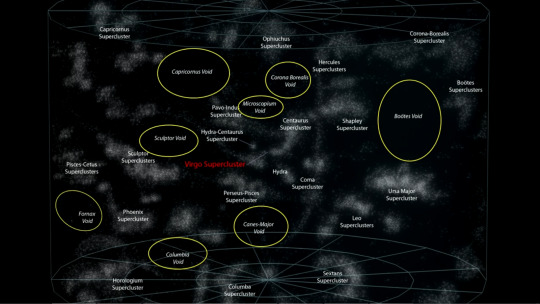
void
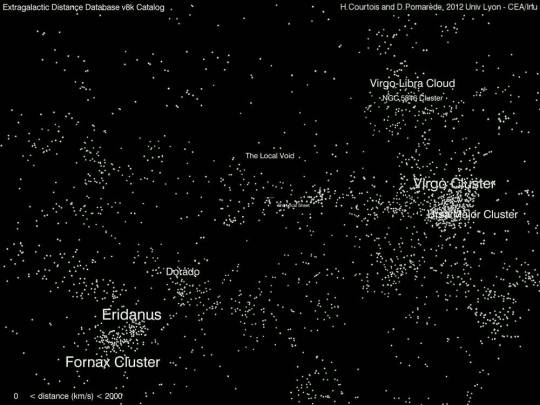
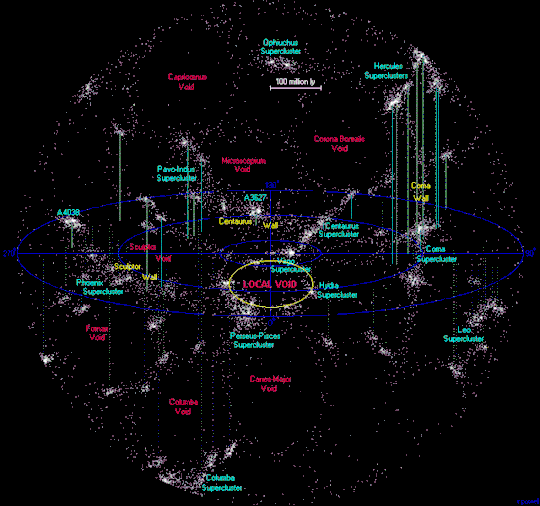
https://en.wikipedia.org/wiki/Local_Void
Cosmicflows-3: Cosmography of the Local Void [] https://arxiv.org/abs/1905.08329
--
https://twitter.com/ESA # https://sci.esa.int/web/juice/home/
2 notes
·
View notes
Link
Bannon, whose populist organization The Movement plans to offer support on polling and messaging to like-minded politicians, has said he doubts nationalists can gain a majority but hopes they can win a third of the assembly’s 705 seats.
Such an outcome is “feasible,” says José Ignacio Torreblanca, head of the Madrid office of the European Council on Foreign Relations, a think tank with branches across the EU.
Controlling such a large group of delegates would allow populists to “change the conversation” and influence EU policy – either by forging alliances with moderate conservatives or tempting other parties to adopt their views simply to try to steal their voters, Torreblanca says.
At a minimum, it would also secure national right-wing governments from the threat of sanctions by Brussels, which require a two-thirds majority, he adds.
Most of the experts interviewed by Haaretz doubted that Bannon could play a key role, since several far-right leaders – including Le Pen – have been extremely lukewarm toward his efforts.
“I doubt that Bannon has the ability to unite these forces, because nationalist movements have a natural tendency to avoid EU-wide alliances,” says Pirozzi. “Still, it is very significant that such an experiment is being conducted. And while it may not bear immediate fruits, it can certainly do so in the long term.”
With or without Bannon, Europe’s populists will have a strong showing, she says, and moderate political forces seem unable to rise to the challenge. “The opposition to this wave of nationalism has been much weaker than you would expect,” says Pirozzi.
Perhaps because mainstream parties have managed to stay in power in the heart of Europe – with Macron in France and Chancellor Angela Merkel in Germany – “people don’t realize the danger,” says Frank Paul Weber, a journalist who worked as a spokesman for former German Finance Minister Wolfgang Schäuble.
This complacency can be deadly in EU elections, which have traditionally a low turnout, giving an automatic advantage to the highly motivated voters of extremist parties, warns Weber.
Even though the EU’s legislative body has a hand in deciding everything from food safety issues to car emissions, “Most people don’t know what the EU Parliament does,” Weber says. “While in the United States it’s quite clear what is the difference between a Republican- or a Democrat-controlled Congress, here nobody understands what’s at stake.”
For this election, the EU has launched a website that aims to gather activists who will work to get out the vote. But most experts agree that the bloc’s traditional political forces have been too slow to adopt the grassroots action and social media savviness that has helped propel the world’s populists.
“Progressives in Europe should learn from the [U.S.] Democratic Party, which just regained control of the House largely thanks to grassroots mobilization and a host of young, diverse candidates,” says Jean-Pierre Darnis, a professor of international relations at the University of Nice. They should also be open to alliances with new movements and nontraditional parties that have already mastered the tools and messaging of today’s politics, he says. One example would be the resurgent Greens party, which has enjoyed strong results in local elections in Germany. A solid alliance between these forces should be able to maintain stability and block any moves by even a large contingent of far-right parties, Darnis says.
But what policies would be favored by a European Parliament with a strong Euroskeptic bloc?
Far-right parties would quickly try to tighten border controls – both within and without the EU – and move to deport immigrants, who are their unifying cause célèbre, says Torreblanca.
They would also move to remove sanctions on Russia and improve ties with Moscow, out of admiration for President Vladimir Putin’s strongman policies and his support for nationalist forces across Europe, Torreblanca says.
Finally, there would be a strong push to halt the progress of – or even undo – the monetary union, while allowing each state more discretion on their economic policies, he says.
“These right-wing groups are all different in background, but as nationalist groups they are united in wanting power to be restored to the state,” says Oded Eran, a former Israeli ambassador to the EU and now a senior researcher at the Institute for National Security Studies in Tel Aviv.
On an international level, such an outcome is likely to be welcomed by Washington and Jerusalem, Eran notes. Prime Minister Benjamin Netanyahu has long been cozying up to Europe’s populist parties, such as Hungary’s Fidesz, Poland’s Law and Justice, and the Freedom Party of Austria, despite the anti-Semitic statements or neo-Nazi roots of some of their members.
“If Brussels is weakened, this will certainly play into the hands of both Israel and Washington, who prefer to deal with individual states in conducting foreign relations, security arrangements and economic ties,” Eran explains.
american intelligence agencies have a long history of interfering in european elections to ensure the victory of a preferred candidate
13 notes
·
View notes
Text
Voter Suppression Surges Ahead of Midterms
By Angela Johnson
Voter suppression has entangled democracy and politics like an octopus for over a century. African Americans in the United States have fought the beast since the founding fathers added the 15th Amendment to the Constitution in 1870. It forbids “any state to deprive a citizen of his vote because of race, color, or previous condition of servitude.” But voter suppression usurped that right by preventing Blacks from exercising their newly-endowed right to vote more than 150 years ago. As the 2022 Midterm elections approach, the tentacles of voter suppression constrict the very workings of election operations and threaten to derail democracy at the ballot box. All the while, Donald Trump and his political lemmings repeat the “Big Lie” that the 2020 election was stolen by voter fraud. States adopt hundreds of new voting laws and election operations to ensure the “Big Lie” does not reoccur in 2024.
Voter Suppression 101 Explained
Voter suppression is a strategy to discourage or prevent specific groups of people from voting, usually Black, Indigenous and People of Color (BIPOC). The Anti-Defamation League defined voter suppression laws as tools “used to impact the outcome of an election by discouraging or preventing specific groups of people from voting.” In the 1950s and 1960s, voter suppression manifested as intimidation, beatings and the murder of would-be voters.
California’s Secretary of State Shirley Weber, Ph.D., is the daughter of sharecroppers. “My parents were the victims of voter suppression when they lived in Arkansas,” Weber said. “My grandfather never got a chance to vote and my grandmother never voted because they died before the Voting Rights Act of 1965.” Weber’s father moved the family away from Arkansas after he was threatened by a lynch mob. He did not have the opportunity to vote until he was in his 30s. “And it wasn’t that they didn’t have the right to vote, as some people think—that the Voting Rights Act of 1965 does—but that’s not true,” Weber said. “What it does, it prevents voter suppression, it prevents people from creating rules and regulations that make it hard for you to vote,” Weber says voter suppression often goes unrecognized. “And we don’t understand it, and therefore it is able to sneak into our system without much fanfare,” she said. “And when we look up, we will discover that we are victims of it, and it’s very deadly.”
By last fall, 19 states had enacted 33 laws that will make it more difficult for some Americans to vote, according to the Brennan Justice Center, a nonprofit public policy center at New York University. “Voter suppression is there when people say, ‘Well you know we’re [going to] make lines longer for you, we’re going to make it harder for you to get a vote by mail ballot,’” Weber said. “In other words, they will create obstacles so that your voting numbers will go down, and your access will be limited.”
‘Warriors’ Fight for Voting Rights
Civil rights activist Fannie Lou Hamer was born on a plantation and was 45 years old when she left a life of sharecropping to fight for voting rights in Mississippi in 1962. She inspired other sharecroppers to register to vote, join labor unions and form co-ops.
“I never knew we could vote before,” Hamer once said. “Nobody ever told us.” She was beaten, arrested and shot at for registering people to vote in her community. Plantation owners kicked her off the property when she became an activist for the Student Nonviolent Coordinating Committee. It inspired her to continue her vital voter registration work.
Since Weber, others now follow Hammer’s example. Pennsylvania’s Secretary of State (SOS) Leigh Chapman and New Jersey’s SOS, Tahesha Way are mentees of Weber and consult with her to ensure 37 million people in their respective states have a clear path to the ballot box. Their job is to secure voting infrastructure and oversee the elections. The non-partisan position of secretary of state is viewed through high-profile crosshairs as the battle over voter access rages. NBCBLK.com’s Randi Richardson reports that Weber, Chapman and Way work to increase voter participation and eliminate voter suppression.
“We’re one of the largest voting blocs in the country,” Chapman said. “The way Black women vote really determines the outcome of many elections at the state level and at the federal level, and we are not represented equally in political office.”
An in-depth analysis of the political lives of Black women published by Clark Atlanta University titled “#Blackgirlmagic Demystified: Black Women as Voters, Partisans and Political Actors” identified African American women as a force to be reckoned with, indeed. “Black women are the most loyal Democratic voting [bloc] in the United States. The phenomenon started way before Donald Trump became president,” the report states in the introduction. The article documents how “Blacks have historically voted less often than whites because of discrimination or voter suppression. Black turnout increased in 2008 and 2012 because of Barack Obama’s candidacies.” The article illuminates the fact that in the last six presidential election cycles “Black women’s turnout rates have consistently rivaled turnout rates of whites, particularly white men.” Presumably, this factoid is what has lawmakers and politicians in swing and battleground states riled up.
Jim Crow 2.0 in 2022
Since the 2020 presidential election, Arkansas has passed four multiple restrictive voting laws. The new laws, among other restrictions, change the state’s voter ID law. Republicans in swing and battleground states seek greater power at the legislative level. To accomplish this, they must maintain control of the Senate and win control of the House. Pennsylvania filed 13 lawsuits to recount ballots cast in the 2020 election. Nine of them were dismissed without comment, lack of evidence or the Supreme Court declined to hear the case. “Voting integrity” has become a popular catchphrase for Republican lawmakers as motivation for this “fast and furious” round of new voting legislation.
Officials in Arkansas, Florida, Iowa, Kansas, Kentucky, Montana and Texas have all all enacted laws that restrict assistance in returning a voter’s mail ballot for a senior citizen or disabled person. Florida and Georgia have banned snacks and water for voters waiting in line. According to the “Voting Laws Roundup” from the Brennan Center for Justice, 27 states introduced, pre-filed, or carried over 250 bills with restrictive provisions at the beginning of this year. Lawmakers in Arizona, Virginia and Washington legislatures have proposed five bills that impose new proof of citizenship requirements to vote.
Last year, there were a number of bills that could “enable partisan interference in election administration,” the report stated. The most extreme “election sabotage” bills would have allowed officials to simply reject elections results.
Filibuster vs. John Lewis Voting Rights Act
When the John Lewis Voting Rights Act (JLVRA) was blocked by filibuster in the Senate, Senate Majority Leader Chuck Schumer, D-NY, acknowledged “a coordinated assault on the right to vote and even how elections are conducted, tallied, and potentially decided.” He characterized that as “a true threat to the ultimate foundation of our democracy.”
The JLVRA received negligible support from Senate Republicans. Every member of Congress, Republican or Democrat, who voted against greater access to the ballot box can be voted out of office. Therein lies the immense power of the vote and why so much effort historically has gone into suppressing that of BIPOC.
The filibuster is a political move Senate Republicans have used recently to block the progress of legislation that will serve the needs of the people, namely the JLVRA. It’s a strategy used to block advancement of expansive voting legislation in Congress on a regular basis. Democratic Senators Kyrsten Sinema of Arizona and Joe Manchin of West Virginia have repeatedly gone on record pledging their support for the filibuster. The Senate voted 48-52 against changing the chamber’s filibuster rules.
November 2021 saw every single House Republican vote against the JLVRA. In the Senate, the bill did not receive the 60-vote threshold needed to defeat the filibuster. Because the filibuster is still intact, JLVRA has no path forward now. That legislation would replace part of the 1965 Voting Rights Act that the U.S. Supreme Court removed in 2013 and aims to restore Department of Justice (DOJ) review of changes in election law in states with a history of discrimination. That provision is known as preclearance, and it has proven to be a point of contention for Senate Republicans.
Litany of Laws Limits Voters’ Rights
The 2020 presidential election brought a massive voter response despite COVID-19, and propaganda spread about vote-by-mail being ripe for fraud. In April 2020, pandemic concerns gripped the country. Former President Donald Trump planted seeds of mistrust and doubt about mail-in ballots during a White House news conference. “Mail-in voting is horrible, it’s corrupt,” Trump said. “Mail-in voting is a terrible thing . . . even the concept of early voting is not the greatest.”
Students: Time’s Up on Non-participation
One of the main rewards of the Civil Rights Movement was the Voting Rights Act of 1965. Every American benefits. A lot of work helps identify new and first-generation voters. Outreach efforts in California high schools pre-register students between the ages of 16 and 18.
“We are making sure they have all the information they need,” Weber said. “We are also encouraging them to work at the polls, because once they begin to work to help others vote, they realize how important it is.”
The California SOS Office of Outreach conducts the “Ballot Bowl Competition” at all the California State University, University of California, community college campuses and private institutions.
“Right now, one of our greatest challenges in voting with regard to low percentages is really in our college-age students between the age of 18 and 35,” Weber said. “And so, we are working hard to make sure they go to polls and understand the importance of voting.”
0 notes
Text
Voter Suppression Surges Ahead of Midterms
By Angela Johnson
Voter suppression has entangled democracy and politics like an octopus for over a century. African Americans in the United States have fought the beast since the founding fathers added the 15th Amendment to the Constitution in 1870. It forbids “any state to deprive a citizen of his vote because of race, color, or previous condition of servitude.” But voter suppression usurped that right by preventing Blacks from exercising their newly-endowed right to vote more than 150 years ago. As the 2022 Midterm elections approach, the tentacles of voter suppression constrict the very workings of election operations and threaten to derail democracy at the ballot box. All the while, Donald Trump and his political lemmings repeat the “Big Lie” that the 2020 election was stolen by voter fraud. States adopt hundreds of new voting laws and election operations to ensure the “Big Lie” does not reoccur in 2024.
Voter Suppression 101 Explained
Voter suppression is a strategy to discourage or prevent specific groups of people from voting, usually Black, Indigenous and People of Color (BIPOC). The Anti-Defamation League defined voter suppression laws as tools “used to impact the outcome of an election by discouraging or preventing specific groups of people from voting.” In the 1950s and 1960s, voter suppression manifested as intimidation, beatings and the murder of would-be voters. California’s Secretary of State Shirley Weber, Ph.D., is the daughter of sharecroppers. “My parents were the victims of voter suppression when they lived in Arkansas,” Weber said. “My grandfather never got a chance to vote and my grandmother never voted because they died before the Voting Rights Act of 1965.” Weber’s father moved the family away from Arkansas after he was threatened by a lynch mob. He did not have the opportunity to vote until he was in his 30s.“And it wasn’t that they didn’t have the right to vote, as some people think—that the Voting Rights Act of 1965 does—but that’s not true,” Weber said. “What it does, it prevents voter suppression, it prevents people from creating rules and regulations that make it hard for you to vote.” Weber says voter suppression often goes unrecognized. “And we don’t understand it, and therefore it is able to sneak into our system without much fanfare,” she said. “And when we look up, we will discover that we are victims of it, and it’s very deadly.” By last fall, 19 states had enacted 33 laws that will make it more difficult for some Americans to vote, according to the Brennan Justice Center, a nonprofit public policy center at New York University. “Voter suppression is there when people say, ‘Well you know we’re [going to] make lines longer for you, we’re going to make it harder for you to get a vote by mail ballot,’” Weber said. “In other words, they will create obstacles so that your voting numbers will go down, and your access will be limited.”
‘Warriors’ Fight for Voting Rights
Civil rights activist Fannie Lou Hamer was born on a plantation and was 45 years old when she left a life of sharecropping to fight for voting rights in Mississippi in 1962. She inspired other sharecroppers to register to vote, join labor unions and form co-ops.
“I never knew we could vote before,” Hamer once said. “Nobody ever told us.” She was beaten, arrested and shot at for registering people to vote in her community. Plantation owners kicked her off the property when she became an activist for the Student Nonviolent Coordinating Committee. It inspired her to continue her vital voter registration work.
Since Weber, others now follow Hammer’s example. Pennsylvania’s Secretary of State (SOS) Leigh Chapman and New Jersey’s SOS, Tahesha Way are mentees of Weber and consult with her to ensure 37 million people in their respective states have a clear path to the ballot box. Their job is to secure voting infrastructure and oversee the elections. The non-partisan position of secretary of state is viewed through high-profile crosshairs as the battle over voter access rages. NBCBLK.com’s Randi Richardson reports that Weber, Chapman and Way work to increase voter participation and eliminate voter suppression.
“We’re one of the largest voting blocs in the country,” Chapman said. “The way Black women vote really determines the outcome of many elections at the state level and at the federal level, and we are not represented equally in political office.”
An in-depth analysis of the political lives of Black women published by Clark Atlanta University titled “#Blackgirlmagic Demystified: Black Women as Voters, Partisans and Political Actors” identified African American women as a force to be reckoned with, indeed. “Black women are the most loyal Democratic voting [bloc] in the United States. The phenomenon started way before Donald Trump became president,” the report states in the introduction. The article documents how “Blacks have historically voted less often than whites because of discrimination or voter suppression. Black turnout increased in 2008 and 2012 because of Barack Obama’s candidacies.” The article illuminates the fact that in the last six presidential election cycles “Black women’s turnout rates have consistently rivaled turnout rates of whites, particularly white men.” Presumably, this factoid is what has lawmakers and politicians in swing and battleground states riled up.
Jim Crow 2.0 in 2022
Since the 2020 presidential election, Arkansas has passed four multiple restrictive voting laws. The new laws, among other restrictions, change the state’s voter ID law. Republicans in swing and battleground states seek greater power at the legislative level. To accomplish this, they must maintain control of the Senate and win control of the House. Pennsylvania filed 13 lawsuits to recount ballots cast in the 2020 election. Nine of them were dismissed without comment, lack of evidence or the Supreme Court declined to hear the case. “Voting integrity” has become a popular catchphrase for Republican lawmakers as motivation for this “fast and furious” round of new voting legislation.
Officials in Arkansas, Florida, Iowa, Kansas, Kentucky, Montana and Texas have all all enacted laws that restrict assistance in returning a voter’s mail ballot for a senior citizen or disabled person. Florida and Georgia have banned snacks and water for voters waiting in line. According to the “Voting Laws Roundup” from the Brennan Center for Justice, 27 states introduced, pre-filed, or carried over 250 bills with restrictive provisions at the beginning of this year. Lawmakers in Arizona, Virginia and Washington legislatures have proposed five bills that impose new proof of citizenship requirements to vote.
Last year, there were a number of bills that could “enable partisan interference in election administration,” the report stated. The most extreme “election sabotage” bills would have allowed officials to simply reject elections results.
Filibuster vs. John Lewis Voting Rights Act
When the John Lewis Voting Rights Act (JLVRA) was blocked by filibuster in the Senate, Senate Majority Leader Chuck Schumer, D-NY, acknowledged “a coordinated assault on the right to vote and even how elections are conducted, tallied, and potentially decided.” He characterized that as “a true threat to the ultimate foundation of our democracy.”
The JLVRA received negligible support from Senate Republicans. Every member of Congress, Republican or Democrat, who voted against greater access to the ballot box can be voted out of office. Therein lies the immense power of the vote and why so much effort historically has gone into suppressing that of BIPOC.
The filibuster is a political move Senate Republicans have used recently to block the progress of legislation that will serve the needs of the people, namely the JLVRA. It’s a strategy used to block advancement of expansive voting legislation in Congress on a regular basis.Democratic Senators Kyrsten Sinema of Arizona and Joe Manchin of West Virginia have repeatedly gone on record pledging their support for the filibuster. The Senate voted 48-52 against changing the chamber’s filibuster rules.November 2021 saw every single House Republican vote against the JLVRA. In the Senate, the bill did not receive the 60-vote threshold needed to defeat the filibuster. Because the filibuster is still intact, JLVRA has no path forward now.That legislation would replace part of the 1965 Voting Rights Act that the U.S. Supreme Court removed in 2013 and aims to restore Department of Justice (DOJ) review of changes in election law in states with a history of discrimination. That provision is known as preclearance, and it has proven to be a point of contention for Senate Republicans.
Litany of Laws Limits Voters’ Rights
The 2020 presidential election brought a massive voter response despite COVID-19, and propaganda spread about vote-by-mail being ripe for fraud.In April 2020, pandemic concerns gripped the country. Former President Donald Trump planted seeds of mistrust and doubt about mail-in ballots during a White House news conference.“Mail-in voting is horrible, it’s corrupt,” Trump said. “Mail-in voting is a terrible thing . . . even the concept of early voting is not the greatest.”
Students: Time’s Up on Non-participation
One of the main rewards of the Civil Rights Movement was the Voting Rights Act of 1965. Every American benefits. A lot of work helps identify new and first-generation voters. Outreach efforts in California high schools pre-register students between the ages of 16 and 18.
“We are making sure they have all the information they need,” Weber said. “We are also encouraging them to work at the polls, because once they begin to work to help others vote, they realize how important it is.”
The California SOS Office of Outreach conducts the “Ballot Bowl Competition” at all the California State University, University of California, community college campuses and private institutions.
“Right now, one of our greatest challenges in voting with regard to low percentages is really in our college-age students between the age of 18 and 35,” Weber said. “And so, we are working hard to make sure they go to polls and understand the importance of voting.”
0 notes
Text
Explaining The Death: Jonathan Tucker's Major Craddock in Westworld
I had had many reasons to intensely dislike TV series Westworld – which I still absolutely do – and only one reason to watch its second season. And so, I started the show again – for Jonathan Tucker. At this point, I’m fairly sure the only thing starring this wonderful man I wouldn’t watch would be a snuff film.
Somewhat morbid humor? Appropriate, given the fact that this post isn’t about how I got my imaginary degree in Tuckerology.
It’s about HOW TUCKER’S WESTWORLD CHARACTER, MAJOR CRADDOCK, REPRESENTS ONE OF THE MAJOR ARCANA ARCHETYPES – THE DEATH.
Interestingly, it’s the second time Tucker plays the Death. The first one was not too long ago, it was on Justified, and the name of the masterfully played (do I really have to add this bit, though?) character was Boon. Check it out, check the whole series, thank me later.
First of all, I have to warn you that I’m going to take my own, admittedly narrow perspective on the archetype. But I highly encourage you to familiarize yourself with other interpretations of this and other archetypes of the Major Arcana. Ultimate raison d’être of this blog is to inspire discussion about the archetypes we are influenced by, because by understanding them we can better understand our own inner mechanics.
So, what is the Death?
Let me start this by stating that the mainstream is full of examples of the Death. Here is just a handful off the top of my head: The Joker, Ramsay Bolton and Joffrey Baratheon from Game of Thrones, the Comedian from Watchmen, Alex from A Clockwork Orange, Mr. Blonde from Reservoir Dogs, Mason Verger from Hannibal, Simon Adebisi from Oz, Moriarty from Sherlock, Negan from the Walking Dead comics, Pavi Largo from Repo! The Genetic Opera, as well as Bart Curlish from Dirk Gently, Gazelle from Kingsmen, Mindy from Kick Ass, Elle Bishop from Heroes, and many others.
Can you already tell what do all these characters have in common?
“Murderers”? “Psychopaths”? True and true.
The Death is the embodiment of aggression, a creature that almost entirely consists of spontaneously directed destructive force. These power and aggression replace almost all the movement of the Death’s soul, all its values and feelings, just as acts of aggression become the Death’s responses to all possible life situations.
The very term ultraviolence was introduced to us by one of the Deaths.
And don’t get me wrong: The Devil, for example, can scuffle-torture-murder left and right, too, but it does it for self-assertion or self-expression, for fame, for money, in a fit of rage; killing without thinking about any gain is a prerogative of the Death. It tortures and murders not only to protect itself, to avenge or to earn reputation – the Death primarily does it to alleviate the boredom of being, so to speak. This is why the Death usually makes violence the basis of its professional activities, meaning that most of the Deaths are criminals, soldiers, assassins and so on.
And, as any sadist, the Death always attaches great importance to the process of torturing/raping or killing. Snapping somebody’s neck, for instance, the Death would enjoy every part of it – the grabbing, the snapping, the crack, the limpness of the dead body in its hands etc. – all the different stages, the materiality of taking a life.
The Mage in low development, on the other hand, would appreciate the fact of its victim’s suffering as a result, but not the process of inflicting this suffering. The Deaths are fundamentally different from all other archetypes in that respect and others.
And where do these vicious creatures come from?
Usually, the Deaths do not choose to be the way they are – and this is one of the traits that help to distinguish them from, for instance, the Chariots – in most cases, the Death is a result of transformation of the Devil, the Justice, the Moon or the Star after being thoroughly frayed by fate. The damage and abuse it suffers frequently takes physical form – it’s not uncommon for the Deaths to even be symbolically or not so symbolically murdered (the Joker and his fall into the vat of chemicals is a classic example) and resurrected (and I’ll have to get to that again later).
Sometimes the Deaths are simply born under a bad sign, but then it’s usually due to some kind of medical/genetic experimentation or something in the same vein.
And it is true for our Major Craddock, too. He was created and programmed into being who he is.
And who is Major Craddock again?..
An android, or a host, as they call it in the universe of Westworld – essentially, an artificial creation designed to mimic a human being. They are used in the Westworld park as part of storylines, or narratives. They are there for the guests’ entertainment. So, Craddock plays the part of a military officer working for the Confederados. He is a first-generation host created in the Argos Initiative by Arnold Weber and Dr. Robert Ford, making him one of the eldest hosts in Westworld, maybe even outdating the park itself.
The first time you see him actually doing something is when the gang of Dolores Abernathy approaches him and his men because they want to join forces with their troupe against an unclear human force.
From the scene of their interaction you can probably remember some of the following details:
— Major Craddock’s stare of a mad dog, which you probably were as unprepared to see in Tucker’s eyes as I was.
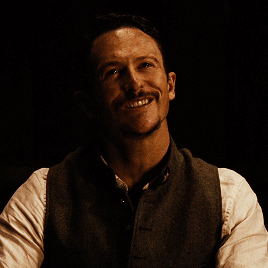
— How unmoved, almost entirely unimpressed Major Craddock is by the death and the rebirth of buried Lieutenant Dunleavy, as he coldly describes “three ounces of Mexican lead in his belly” and accepts the idea that his Lieutenant has been brought back to life with a simple “indeed”, which you can interpret not only as a lack of curiosity but perhaps also as weak emotional attachment to his soldiers, who absolutely deserve it for the lack of any individuality. But I'm getting ahead of myself.
— Something you could probably call hostile hospitality on Major’s part – I mean his eerie, almost theatrical politeness, which wouldn’t fool anyone into thinking that the man isn’t disrespectful and provocative.
— Maybe a couple of other things, such as Craddock’s sharp tongue, macabre humour, fluid movements, or how appetizingly he ate.
— Finally, the fact that Craddock refuses to accept the deal and states the only partnership that would happen would be the rape Dolores and Angela by him and his unit:
Craddock: “My final decision is which of you to keep for myself and which of you to throw out there for my men.”
In other words, demonstration of the dominant position by means of threats of violence.
Here you have it, ladies and gentlemen: the Death bingo.
Oh, and then Teddy shoots Craddock after his statement, but Craddock is brought back to life by a captured Technician. Spoiler alert, I guess?
I’m going to broach everything mentioned, but for now, I want to concentrate on the “eerie politeness”, because the Deaths in high development are almost always characterized by this insincere courtesy, and that for a reason I can explain to you.
In short: the elements Jung calls shadow and persona aspects of the psyche are swapped over in the Death.
Every other character than the Death, including very aggressive specimen, even the Devils, have socially acceptable Dr Jekyll (the Persona) and a repressed, socially unacceptable Mr Hyde (the Shadow) in them. For the Death, the Shadow is its normal, default state, because the archetype doesn’t have the same social needs as other archetypes. It simply doesn’t need to hide its feelings and desires in order to look “normal” – it doesn’t tolerate social conventions.
So, typically, the Death is a 24/7 Mr Hyde. It does have a thin coating of the Persona, but it only uses it on very special occasions, to deceive or to – paradoxically – appear even more intimidating than it already is. This is why Craddock’s attempts to be silver-tongued may cause you discomfort – in these moments, he is a crocodile smiling at you.
Importantly, all of this doesn’t mean that the Death is always a cutthroat that only thinks about torturing animals, burning buildings down, raping women and murdering men. Not at all.
Almost all of the Deaths are able to control themselves to some extent, but this control is carried out by the Animus, not by the Persona. How is this different? The Animus isn’t a social suit, meaning that it isn’t used to appear to others, it’s a personal moral fiber, something close to a codex that prevents the Death, who sees itself as a warrior, from turning into a butcher raping and killing everyone around.
Does this mean that the Devil’s transformation into the Death happens after its acceptance of the Shadow as the terminal state of its personality and almost full rejection of its Persona? Yes, it absolutely does.
By the way, the Persona of the Empress is the Anima, and that’s why the Death inevitably gets into conflict with the Empress as soon as they get in contact. Would you like to guess who Dolores is (confess, she reminds you of Cersei Lannister)?
So, yes, the fact that Craddock joins Dolores’s group as they arrive at Fort Forlorn Hope, where Craddock’s commanding officer agrees to help Dolores in the morning to defeat the incoming security force, shows us another aspect of the Death.
Even though, the archetype is mostly independent, it usually is guided or influenced – sometimes directly, by the Emperors and the Empresses, the Mages and the Hierophants, but more often by the mediators, like the Hanged, the Justices, the Devils or the Towers. (Left to itself, the Death either indulges in debauchery or spends whole days planning ideal crimes/operations and perfecting its murder skills, waiting for someone who will suggest a proper victim to appear.)
And in that respect, the Deaths, generally speaking, fall into two categories – those who end up aligned with the forces of order and those who are, as the Joker puts it, “agents of chaos”, respectively.
How are they different?
The Deaths on the side of order are ideal warriors and guardians of law, because they channel their destructive energy into annihilation of all those who they are told to kill. And the Deaths execute these orders for a two-fold reason:
First, their leaders symbolically embody their parents, since they take responsibility for their actions, which the Deaths greatly appreciate (I’ll get to it in a moment).
And second, the system they serve provides them with the concept of an enemy/victim, thereby relieving them of the need to choose their victims on their own. The Deaths are generally infantile, and many of them can’t or don’t want to – sometimes without realising it – make their own decisions. This makes them ideal objects of manipulation – they are loyal and sufficiently stupid.
The Deaths that are taking the side of the chaos usually become leaders/subleaders themselves, because it is much easier to destroy the world together with your henchmen than to try doing it in splendid solitude. Very interestingly, the henchmen of the Deaths are often marked by them (uniforms, masks, obligatory scarifications etc.), like zombies are marked by signs of decomposition, and thereby represent the extension of the Death’s physical influence.
(And the Deaths from the second category are usually smarter, there are even geniuses among them e.g. Moriarty from Sherlock or the Joker. These Deaths also tend to be more popular due to the disturbing combination of sadism, intelligence and cheerful attitude (we’ll get to that, too) – Negan from the Walking Dead would also be an example of the Death that is a loved strategist).
Is this true for Major Craddock? It is.
His troupe is shown as a splinter group, a gang with him as its leader. They do not appear to be motivated by any ideology, murdering, raping, marauding – in short, embracing outrage as normality. They’re just having what they hold for fun, like a pack of hungry wolves or perhaps rather mad dogs.
Dolores sums up this important characteristic of the Death in the following quote:
Teddy: “These men are animals.” Dolores: “These men are just children. They don't know any better. They need to be led. We don't stand a chance against the men coming for us if we're fighting alone.”
She uses a key-word I’d like you to remember. “Children.”
Mental age of the Death is always approximately ten-twelve years, which explains not just their easy relationship to violence but also a number of other of their typical characteristics – above all their inability - and usually unwillingness - to build a family or sustain a partnership (which is perfectly fine when you are talking about a reflective individual, but here we certainly aren’t).
Moreover, the Deaths are sexual deviants – paedophilia, bestiality, incest, you name it – everything that can certify perversity and lack of understanding of the concept of intimacy can be found here.
Roughly speaking, the Death is a preceding evolutionary stage of the Devil and the Mage – whereas the Mage is an adult with adult emotions, adult social standing and overall adult psychology, and the Devil is a typical teenager, the Death is a cruel and merry child.
And this easily explains why two possible negative transformations of the Devils are the Emperor and the Death – both of these archetypes are violent, but whereas the Emperor is a superhuman, the Death is an animal. To become one of them, the Devil has to get rid of everything humane in it and learn to see in people either ants below its feet or food. This evolution is a direct consequence of the resolved conflict of “the awkward age”: either you become an adult, or you regress into a child stage; either you reflect on your power and use it consciously or turn it into the defining element of your behavior. And like a naïve child it is, the Death hates to be tricked by heartless adults. At Fort Forlorn Hope, the Confederados are soon revealed to be mere pawns, as Dolores only needed them to distract the security force: once they are no longer useful, she has Wyatt’s followers brutally murder them. Craddock angrily vows revenge, so Dolores orders Teddy to execute him and his men: however, after Craddock taunts Teddy for simply following Dolores’s orders, Teddy lets them escape.
Just look at what he says:
Craddock: “I been watchin' you. We ain't so different. You and I are both triggermen to tyrants. Except me, I know what I want. But you ain't even sure about that termagant you take your orders from. I look at you, and what I see is pathetic.”
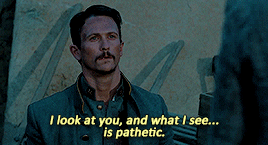
Isn’t it the kind of devaluation a child would use? You may be pointing this gun at me, but you’re still a chicken! Na-na, na-na, boo-boo, we get it, Major. Alas, Teddy doesn’t. Most likely, he doesn’t understand whom he is dealing with here.
And right now you might be wondering whether you can identify the Death by looking at it.
There is no such thing as "prototypical appearance" when it comes to the Deaths, but many of them look racy, wear extravagant or simply expensive clothes (“Westwood!”), have prosthetics, bear scars etc., or can be vaguely attractive.
There are many characters of very specific appearance among the Deaths: they can have physical abnormalities (both innate and acquired) and various types of biomodifications or simply eccentrically approach their image. As a rule, this specificity is connected to their becoming of the Death – it can be both the reason of the transformation into the Death (e.g. a catastrophe leads to irreversible physical and psychological changes of the character) and the direct consequence of it (i.e. the Death changes its appearances as it enters the new phase of its life). I would say that it could be partially true for Major with his uniform, too, if we assume that it was the war which had made him what he is.
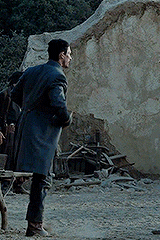
And right now you might be wondering whether this bit was an excuse to insert here a gif with Craddock shaking down his coat… I shall let you be the judge.
Next time we see Craddock, he takes the Man in Black and Lawrence hostage when they come to Las Mudas. He brings them to the church where the townspeople are being kept, and the Man in Black tells him where the town weapons are stored. But not before Major kills the town representative, because he – Craddock – isn’t doing any deals.
Craddock: Now, me and my men here have a long journey ahead of us. We need food, whiskey, and ammunition. You people have some village elder who can speak for you? Make some kind of a deal? (GUNSHOT) (ALL MURMURING) I ain't interested in makin' fuckin' deals. You understand?
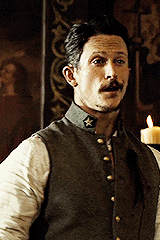
Probably inefficient?.. Not for the Death, who operates on intimidation. I bet, Major Craddock could threaten and kill these poor townspeople all day. Because, you see:
Craddock: We know you motherfuckers are rebels. So you’re gonna tell me where the fuck you hid your weapons, or you’re gonna die. Lawrence: The second we tell him he's gonna kill us all anyway. But you know what? It is very likely that Lawrence is right, but it isn’t necessarily so. Despite what you might be thinking now, the Deaths aren’t complete strangers to nobleness. Don’t raise your eyebrows, let me explain: they like to challenge and to accept challenges, to find worthy opponents – a victory over an equal or even a superior opponent results in ecstasy of the usually unemotional Death. And this is why sometimes the Death is able to respect an interesting opponent suggesting a one-on-one combat, which, however, probably wouldn’t prevent it from hurting the relatives of the said opponent... Because the Death has its own way of assessing such things. For instance, it can find the murder of a waiter for a spilled tea understandable and condemn a genocide. I’m going to talk about the reasoning behind it later.
Now I’d like to turn to the two defining attributes of the Death apart from sadism – in every sense of the word, including sexual sadism.
First one is its amorality. Even if the Death develops its own moral system, the core at the center of that system becomes the mirror image of the public morals. Many of the Deaths do, indeed, understand the concept of “forbidden”, but this knowledge in the end only tempts them to violate the prohibitions. Most of them, though, aren’t interested in comprehending the concept of moral at all. Take, for instance, Bart from Dirk Gently: she is a holistic murderer, who kills because the universe compels her to. It’s not a part of her job to question why she has to do what she has to do.
Importantly, this factor defines not only the Death’s behavior but its whole way of life – the choices the Deaths make and what these lead them to.
The second defining attribute is gaiety of the Death. That gaiety shouldn’t be mistaken for optimism – the Deaths are rather pessimistic, but at the same time they find evil funny; not to mention the fact that, in many cases, typical manifestations of gaiety, such as smiles and laughter, can express almost any emotion when it comes to the Death. That perverse gaiety also often becomes an important attribute of the Death’s exterior – the Comedian and the Joker probably are the most striking examples for that, – and in combination with vigor and vitality (children are usually very energetic), which are also quite characteristic for the most Deaths, it gives us the archetype that by murdering, raping, torturing, and committing acts of terrorism for its own amusement brings about irreversible changes in the cosmographic picture of its world.
In other words, even though the Death per se is a weak occult figure, it compensates for it with its physical influence on the environment, often becoming one of the most important figures of its fictional universe in the process.
Also, many of the Death are approaching the position of a trickster in their worlds, but due to their primitivism they rarely realize the potential of this possible cosmographic role.
In many ways, it resembles the modus operandi of The Wheel of Fortune – another very physically influential archetype.
And another archetype once played by Tucker, hm. Matthew Brown was the most memorable cameo of the second season of Hannibal, I guarantee you. And it makes sense to give these physical characters to a very physical actor (and person), when you think about it: the way the man moves on camera, almost aggressively at home in his own body, all the tiny nuances of his intimate interactions with the props that are basically creating an additional layer of dialog and of the characters themselves… Isn’t it the best way to breathe life into physical archetypes and simply a wonderful approach to acting? I know, I know, you aren’t here because of my degree in Tuckerology. It’s just hard to talk about the man without professing love.
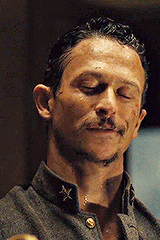
The next thing Major Craddock does is shooting a bartender balancing a glass of nitroglycerine on the back of his hand after the man successfully does for him what he has been told to. Irony or sadism? It’s the same for the Death. You are recalling Ramsay Bolton torturing Theon Greyjoy, aren’t you?
It is worth noting that since the act of murder is perceived by the Deaths as the act of domination over the world, and basically is their biggest source of pleasure, many authors like to stage the battles between the Deaths and the Hermits, who endure great moral suffering even when committing violence in self-defense.
The fact that the Death doesn’t find it shameful to find pleasure in evil and laugh at the absurd and unbearable lightness of being (yes, it sort of is this existential, we’re getting there) may make you think that there isn’t anything holy to the Death at all, but – and the Death has this in common with the Mage – usually something is. It’s just insanely difficult to find, since even the Death doesn’t actually realize it sometimes. Again, think about a very cruel child, who despite everything still is a child and loves, for instance, some TV character or other figure.
And since we are talking about what the Death might like or love, the Deaths usually have a narrow circle of interests, which predictably includes drugs, weapons (Remember the impressed look on Craddock's face after that demonstration of a blaster? Even if you don't, here I have it for you:

), explosives, violence, sex (rape), terrorism, but also – and this is where it gets interesting – quite often it likes dancing and music, which seems to appease their inner predator; it frequently likes childish activities or things associated with childhood (Simon Adebisi blowing soap bubbles!), animals, with which the Deaths subconsciously feel a certain kinship, games, competitions, fights, sports, food, and clothes.
Also, it usually is quite indifferent to money - again, like a child, who doesn’t understand the value of it; this is one of the traits that help you distinguish the Death from the Wheel of Fortune, who is an avid fan of making profit in all sorts of manners.
But of course there isn’t a thing that the Death generally enjoys more than tormenting people and putting them into uncomfortable situations, which Major Craddock demonstrates by forcefully dancing with Lawrence’s wife in front of him.
Yes, you'll have to believe me that in this particular instance dancing with Jonathan Tucker is actually intended as torture.
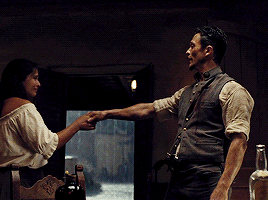
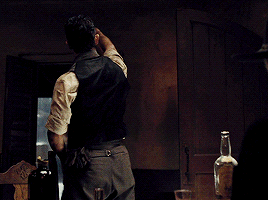
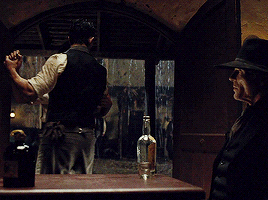
Maybe an interesting connection to a deeper meaning of the card of the archetype is that the Death doesn’t discern between age, race or sex, just as actual terrible misfortunes can potentially happen to everyone. However, being an expert sadist, the Death can and usually will make use of those characteristics of its victim that make them especially vulnerable, be it physical or psychological vulnerability.
For all the reasons discussed above, the Deaths are usually lonesome. The primitiveness of their life philosophy, together with aggressiveness that gives them a dangerous reputation, eventually isolate the Death from the normal people almost completely. Sometimes leaders or quasi-leaders, such as the Mages and the Devils in high stages of their development, the Hanged and the Justices, seek their assistance, but even then they tend to distance themselves from the Deaths in personal interactions.
The young Deaths – usually in their lower stages of development – do not pay attention to this zone of estrangement around them or even like it, seeing it as a confirmation of their value and uniqueness as a source of danger for everyone, including potential allies.
But the older Deaths often suffer from loneliness and try to build a circle of friends but fail almost always.
This loneliness, which is usually a symptom of entering the phase of high development (in which the Death realizes its emotional and social inferiority), can change the Death very much. This is, for example, what the Comedian was going through when he found out about the plan of Ozymandias and realized that he can’t understand a mass murder of those who aren’t his enemies or prey (“We know you motherfuckers are rebels!”). This is when murder becomes barbarity in his eyes, and instead of perceiving it as a joke, he asks: “I mean, what’s funny? What’s so goddamn funny? I don't get it. Somebody explain... somebody explain it to me.”
The Comedian’s isolation indicates the same thing Jake Gallo’s search for life reference points, the tragic nihilism of Ares or Grievous’ perfectionism do – the Death only suffers from its inadequacy.
In other words, golem wants to become a human, but it can’t, because it isn’t designed to play that role. Even if the Death is capable of loving or feeling anything at all, it still looks at the world from a perspective of a blunt metal object: here is me (or mine) and there are them, the enemies, who I/we have to kill. Not to kill to save a world or get something, simply because they are the enemies.
And speaking about what else can hurt the Death: Physical world is very important to it, it craves for contact with it, so, blindness, paralysis or amputation would be enough to destroy the Death’s personality.
But what leads to the actual downfall of the Death? One could assume that it is stupidity or excessive cruelty that leaves the Death without any companion-in-arms in a difficult situation. But no, actually.
What exactly killed Major Craddock?
Remember the “I know what I what” bit? It was this assumption. Because it’s the incipient ambition that usually kills the Death.
We cannot force ourselves to be kin to what is unlike us, and since the Death is a blind branch of the archetypical personal evolution, it is confined to itself. (The Deaths usually do not evolve, but can acquire some resemblance to the Mages with age and certain intellectual growth.) The Death can’t be anything better than an assassin (serving order) or a bandit (serving chaos). The Joker understands it: “You know what I am? I’m a dog chasing cars. I wouldn’t know what to do with one if I caught it! I just do things.”
Major Craddock, on the other hand, doesn’t (didn’t...) seem to realize that the aspirations he connected with an unknown place called Glory, which he was hellbent on making his way to, resulted from the desire to become more than he is – a thug on the side of the losers (the Confederados), an artificial being, a mad dog, lost without someone holding its leash. Someone who never had the free will to decide what he wants to be but was forcefully put into being. I told you it’ll get existential!
Instead, Major thinks that he is the active subject that chooses his fate and was chosen by death, becoming its herald and champion:
Craddock: “Death is an old amigo of mine. I died just recently, in fact. But death can't bear to lay claim on me. So it sent me back here to do its bidding. Because I do it with such goddamn style. I've served death well. And in turn, it'll be watching over us as we cross these lands.” Right after that The Man in Black explains to him: The Man in Black: “You think you know death but you don't.”
Given the fact that Craddock is the Death and decided to identify with death after years and years of inflicting violence, you could argue that The Man in Black is basically saying here: “You don’t know yourself, boy”.
And what about what happens then? Well.
The Death has the tendency to escape death for quite some time. Yet when it does die, it’s usually a very horrible way to go: being eaten alive by your own dogs, falling from a great height. And now we can add a nitroglycerin cocktail to this list as well.
And honestly, thank goddess. As much as I love Jonathan Tucker and his characters, the series was painful to watch for me personally. And now I can't wait for City on a Hill, wondering who Tucker’s next archetype is going to be, because the man certainly has an intuitive grasp of these things.
So, this is it. Thank you for you attention and let me know what other Tarot archetype you'd like to learn more about!
#the major arcana#tarot#tarot cards#tarot archetypes#major craddock#westworld#jonathan tucker#the death#character overview#fandom meta
6 notes
·
View notes
Text
Where Europe’s most powerful economy is falling behind
By Paul Carrel, Reuters, June 25, 2018
MASSEN-NIEDERLAUSITZ, Germany--Until March of this year, goods arriving at family engineering firm Zemmler Siebanlagen in eastern Germany generated piles of paperwork and hours of manual cross checks. These days, stockman Ronny Mucha records deliveries on a specially designed tablet application that immediately updates other departments. It takes a fraction of the time.
The firm’s founder, Heiko Zemmler, credits a government-backed scheme with “taking us through a psychological barrier” about digital technology. The inventory application is just a beginning, hopes Zemmler. One day he wants his welders and assembly line workers to be able to access design plans and lists of parts on a shared platform.
That’s all common enough in modern factories from California to South Korea. But there’s a problem. Zemmler needs high-speed internet capable of carrying large quantities of data to make the switch. “Broadband has come to many people, but unfortunately not to us,” he said at his plant in the Brandenburg region, not far from the Polish border.
Europe’s most powerful economy, at the forefront of industrial innovation for decades, is struggling to adapt to the digital age, and its policymakers are worried.
Zemmler’s experience encapsulates two key obstacles to change here. It took a nudge by the government to get him to embrace digital technology in the first place. And, now that he has done so, his plans are being frustrated by a woeful broadband network.
A 2017 study by the Organisation for Economic Cooperation and Development (OECD) ranked Germany 29th out of 34 industrialised economies for fast internet connections. Japan and South Korea lead the pack. Chancellor Angela Merkel has made fixing Germany’s digital deficiencies a priority for her fourth and likely final term, saying “our future prosperity depends on it.”
In interviews, company bosses and senior policymakers set out the scale of the challenge the government faces and explained why German firms have been slow to adopt digital technology to store and share data and manage workflow.
The paucity of high-speed internet was one barrier, they said. Others included government inefficiency and a reluctance among small and mid-size firms, Germany’s “Mittelstand,” to embrace new ways of working. Added to that, years of surveillance by the Nazis and then the Communists have left many Germans suspicious of data sharing.
There’s also a paradox at work: Germany’s strong economy is blocking efforts to modernize, they said, with firms too busy meeting orders today to plan for a digital future.
Government data shows the extent of the problem. A government fund created to expand Germany’s broadband network managed to spend only three percent of the money available last year, figures in a Jan. 23 letter from the deputy finance minister at the time, Jens Spahn, to a fellow lawmaker showed. Spahn has since said Germany is up to 20 years behind U.S. competitors, with many managers stuck in the “fax age.”
Even Germany’s car industry is feeling the threat. In the past, Chinese firms sought to learn from German carmakers. But on a trip to China in May, Merkel was so struck by China’s progress in data processing that she asked for Chinese help to develop electric and autonomous vehicles. China has yet to commit.
To be sure, Germany has shown an enviable ability to adapt to political, economic and technological challenges over the decades. At the turn of the century, it was called “the sick man of Europe,” with an inflexible labour market that weighed on productivity. Chancellor Gerhard Schroeder’s government responded by shaking up the welfare system to encourage more people into the workforce. It turned out well: Germany regained competitiveness and profited from demand in the industrialising world for its high-end engineering products. Unemployment has fallen from above five million in 2005 to less than half that level now.
“Germany has overcome much bigger problems before,” said Carsten Nickel, managing director at consultancy Teneo Intelligence.
“But it did so by not shying away from, at times, radical change. That, in turn, requires agency and political leadership. Schroeder ultimately lost his job over his economic reforms. It would probably be a stretch to claim that a comparable willingness for bold political leadership exists in Merkel’s Berlin today.”
Indeed, Merkel has spent much of her political capital this year trying to defuse a row in her coalition over immigration policy.
Alexandra Horn’s team at the BVMW Mittelstand association of small and mid-size firms worked with Zemmler to introduce the inventory application his company now uses. It is part of a government-backed scheme called “Digital Together.”
Horn says she has sometimes been met with laughter when taking this digitalization drive to firms outside the main cities like Berlin, where a healthy startup scene masks slow progress elsewhere. Because of poor internet speeds, “digital business models cannot be implemented, plain and simple,” Horn said.
According to the OECD, just 16 percent of German firms use cloud services, “a key productivity enhancer.” That’s well below the OECD average of 25 percent and far behind countries including Finland (57 percent), Sweden (48 percent) and Japan (45 percent).
“If you don’t have the infrastructure, you cannot have a successful digitalization of the economy,” said OECD telecoms and internet expert Verena Weber.
Germany’s coalition government has pledged to provide high-speed gigabit internet access across Germany by 2025. It aims to develop a fibre optic network to all corners of the country. Japan has 76 percent of its broadband via fibre, Latvia 62 percent and Sweden 58 percent, compared to just two percent in Germany, OECD data show.
Efforts to upgrade Germany’s internet with state-of-the art fibre technology are coming late partly because Germany’s telecoms industry regulator, BNetzA, allowed Deutsche Telekom, the former national network monopoly, to use an intermediate solution called “vectoring technology” to increase the bandwidth of existing copper lines instead of running fibre all the way into homes and offices.
Finance Minister Olaf Scholz said in May the government would use higher-than-expected tax revenues to start a digitalization fund into which his ministry would transfer 2.4 billion euros ($2.85 billion) this year. The fund will be increased by revenues generated from the auction of 5G mobile licences.
But throwing money at the problem is not guaranteed to fix it, as shown by the Jan. 23 letter from Spahn, the deputy finance minister at the time. It revealed that of the 689 million euros set aside by the government for broadband investment, only 22 million was used last year. Policymakers and company bosses complain that tender operations for subsidies can be so slow and complex that federal funds often go unused.
For Kyffhaeuserkreis, a rural district in the eastern state of Thuringia, moves to streamline the process can’t come soon enough. Kyffhaeuserkreis is still waiting for its high-speed broadband three years after setting the wheels in motion. The tender process alone has taken almost two years.
Another problem is that no single government department is in overall charge. The ministry for transport and digital infrastructure is in charge of broadband rollout, the economy ministry for promoting new technologies, the interior ministry for security and the justice ministry for consumer protection in the digital age. In addition, regional authorities grant planning permission.
Heiko Zemmler honed his engineering skills repairing mopeds in former East Germany. He began leasing and servicing industrial sieves for the construction, forestry and waste management industries in 2000 and later began manufacturing them, establishing Zemmler Siebanlagen GmbH in 2010. With recent annual sales growth rates of 20 percent to 30 percent, Zemmler said he was so busy fulfilling orders he didn’t consider shifting to digital technology until the BVMW Mittelstand association contacted him.
It’s a familiar story. The transition to digital technology is being overlooked because of roaring growth now. Last year, the German economy grew by 2.5 percent, the strongest pace since 2011, outperforming France and Italy.
Digitalization czar Baer said firms need to think ahead.
“Of course, it’s pleasing that the order books are full now, but that will not automatically remain the case,” she said. “The German Mittelstand is characterized by the fact that it thinks long term, in generations instead of in quarters. Without digitalization, no company can be future-proofed.”
“To think that we can be at the forefront of artificial intelligence and be as restrictive as possible with data is just like wanting to rear cows without feeding them.”
1 note
·
View note
Text
0 notes
Text
0 notes
Note
mw?
MWF: emily vancamp, amber heard, ginnifer goodwin, tamsin egerton, jennifer morrison, krysten ritter, emma roberts, lana parrila, taissa farmiga, jessica lange, aja naomi king, eva green, maggie q, sarah paulson, elizabeth hurley, megan fox, meghan ory, jamie lee curtis, gabourey sidibe, kaya scodelario, jessica lowndes, viola davis, karla souza, kristin kreuk, janel parrish, hannah murray, angela bassett, ashley benson, sasha pieterse, rose byrne, emily deschanel, aishwarya rai, jessica chastain, natalie portman, molly queen, stana katic, robin tunney, madeleine stowe, madelaine petsch, famke janssen, monica bellucci, skyler samuels, keke palmer, anna paquin, crystal reed, lucy hale, ashley greene, danai gurira, melissa mccarthy, nikki reed, sophia bush, claire holt, victoria justice, phoebe tonkin, priyanka chopra, mozhan marnò, cara delavigne, arden cho, grace phipps, emily vancamp, nina dobrev, anne hathaway, blake lively, melinda clarke, olivia wilde, famke janssen, abigail breslin, rutina wesley, taraji p. henson, sarah bolger, mila kunis, emmy rossum, kristin bauer, alexandra daddario, britt robertson, chloe bennet, lily rabe, lily collins, alexandra breckenridge, catherine blanchett, julianne moore, michelle trachtenberg, catherine zeta jones, deborah ann woll, rochelle aytes, kirsten vangsness, evan rachel wood, aj cook
MWM: richard armitage, tyler hoechlin, robert pattison, idris elba, jude law, alfred enoch, jack falahee, henry cavill, james spader, ben barnes, paul wesley, logan lerman, jason momoa, douglas booth, cillian murphy, ben affleck, ryan eggold, jared padalecki, charlie hunnam, bill skarsgard, tom ellis, billy brown, will smith, michael b. jordan, amir arison, bradley cooper, shemar moore, joshua bowman, torrance coombs, alexander skarsgard, landon liboiron, timothée chalamet, gabriel mann, sebastian stan, josh dallas, chris hemsworth, charlie weber, chris woods, matthew gray gubler, d. b. woodside, liam hemsworth, matt bomer, colin o'donoghue, hugh laurie, chace crawford, robert downey jr, ed westwick, chris evans, josh dallas, michael fassbender, anthony hopkins, chris pine, mads mikkelsen, colin morgan, omar epps, the rock, tom hardy, nathan fillion, patrick dempsey, simon baker
there ya go! plenty to choose from.
1 note
·
View note
Note
mwf
canons: renata, irina, renee dwyer, maggie, corin, siobhan, tia, katie marshall, kim conweller, whitney, charlotte, serena, jennifer, maysun, tanya, angela weber, & leah clearwater.
fcs: danielle rose russell (for hope’s twin), lulu antariksa, claire holt, candice king, candice patton, halston sage, carlson young, zion monero, omono okojie, saoirse ronan, becky g, kiernan shipka, margot robbie, zoey deutch, willa fitzgerald, olivia liang, sabrina carpenter, chiara aurelia, harley quinn smith, lyrica okano, courtney bandeko, chloe bailey, savannah lee smith, jennie kim, skyler samuels, stephanie styles, suki waterhouse, sophie cookson, samara weaving, victoria justice, tristin mays, nicole munoz, lucy boynton, jennh debicki, eliza bennett, freya mayor, gage golightly, greta onieogou, guzide arslan, alia bhatt, aisha dee, adria arjona, demet ozdemir, jessica barden, irina baeva, jodie comer, jo jingyi, camila queiroz, bree kish, lana condor, bae suzy, samantha logan, la’tecia thomas, hafsanur sancaktutan, chloe bailey, simay barlas, normani kordei, tati gabrielle, and davika hoorne.

0 notes